27.12.2016
Karen Jeppe was born in 1876 in Giling, Denmark.
Like his contemporaries, Jeppe first heard about 1894-1896 Armenian massacres from European press. 1902 became a turning point in her life. After listening to a lecture delivered by Danish scholar, humanist Oge Meyer Benediksen, Karen Jeppe becomes member of “Danish Friends of Armenians” humanitarian organization and meets Johannes Lepsius; founder and president of the German Orient Mission with a willing to work with them.
Jeppe was not a missioner. Jeppe and Benediksen were deeply convinced that in order to help Armenians in the Ottoman Empire and stimulate their development they have to respect their religion and culture.
Jeppe and the leaders of “Danish Friends of Armenians” organization had understood that in order to cooperate with German and American missionary organizations, and local authorities, as well, they must have a support in the Ottoman Empire.
In 1903, she arrives in Urfa; city in the south of Ottoman Empire, 27 years old Karen became the only field-worker of “Danish Friends of Armenians” organization. Immediately she assumes the responsibility of more than 300 Armenian orphans in German migration camp of Urfa. During the Armenian Genocide in 1915, Jeppe did her best to help Armenians and sheltering them in her own house. Ottoman gendarmes repeatedly searched her house, but could not find the Armenians hidden in the basement and garden. Sickness, constant sense of danger and the stresses she had in the scenes of loved ones death nearly exhausted her.
“It would be great not to see the death road, extended from Urfa to the far-far endless yellow plain scorched by sun. It was not full of fresh green, shady trees but instead with dead bodies with various degrees of decomposition. Some of them were fell down near the gates of the city. Patients were driven out of their beds beating them with sticks, some of them managed to make a few hundred extra step”, wrote Jeppe. In 1917 Jeppe leaves the Ottoman Empire to her homeland due to her illness.
She tried to keep the world aware of crimes against the Armenians by her testimonies, lectures and published articles.
In 1920, Karen Jeppe moves to Aleppo and continues her pro-Armenian activities. In 1921 she was appointed as authorized Commissar of the committee set up to rescue kidnapped Armenian women and orphans.
In the first three months the committee already succeeded to rescue one hundred Armenian women and girl from Islamic captivity. With this purpose Karen Jeppe establishes a searching center in Aleppo. Gradually, when the number of recued women and children has increased, there was a need to create a shelter for them. Those rescued from Islamic captivity received necessary medical care, special care, clothes and food, their identities identity was checked, their names along with their photos were sent to newspapers, churches, Armenian associations in aim to find their relatives. For those who could not find their relatives special shelters were opened, and these lonely women had to adopt and take care of the orphans.
Misak Melkonyan; Karen Jeppe’s adoptee was engaged in orphan collecting works and Karen Jeppe herself was taking care of them. Everywhere in the desert this slogan was heard: “One Armenian, one gold”.
Jeppe gave great importance to the role of Armenian Church and the active participation of the clergymen in the upbringing of those freed orphans. She believed that the Armenian Church with its rituals and ceremonies can play a big role in returning those Armenians who had lived for many years with foreigners being deprived of their traditions, religious beliefs and perceptions to their national identity.
Jeppe was awarded by the highest Danish medal “Knight of the Legion of Honor”. She was also awarded by the French authorities with special medal for her services during the French mandate in Syria, as an authorized representative of the League of Nations.
Karen Jeppe was died in July 7, 1935. Upon her request, her funeral ritual was held according to the Armenian Apostolic Church. She was buried in the National Armenian Commentary of Aleppo. In 1947 the orphanage of Aleppo which was established by Jeppe was turned to high school and continues its work up today.
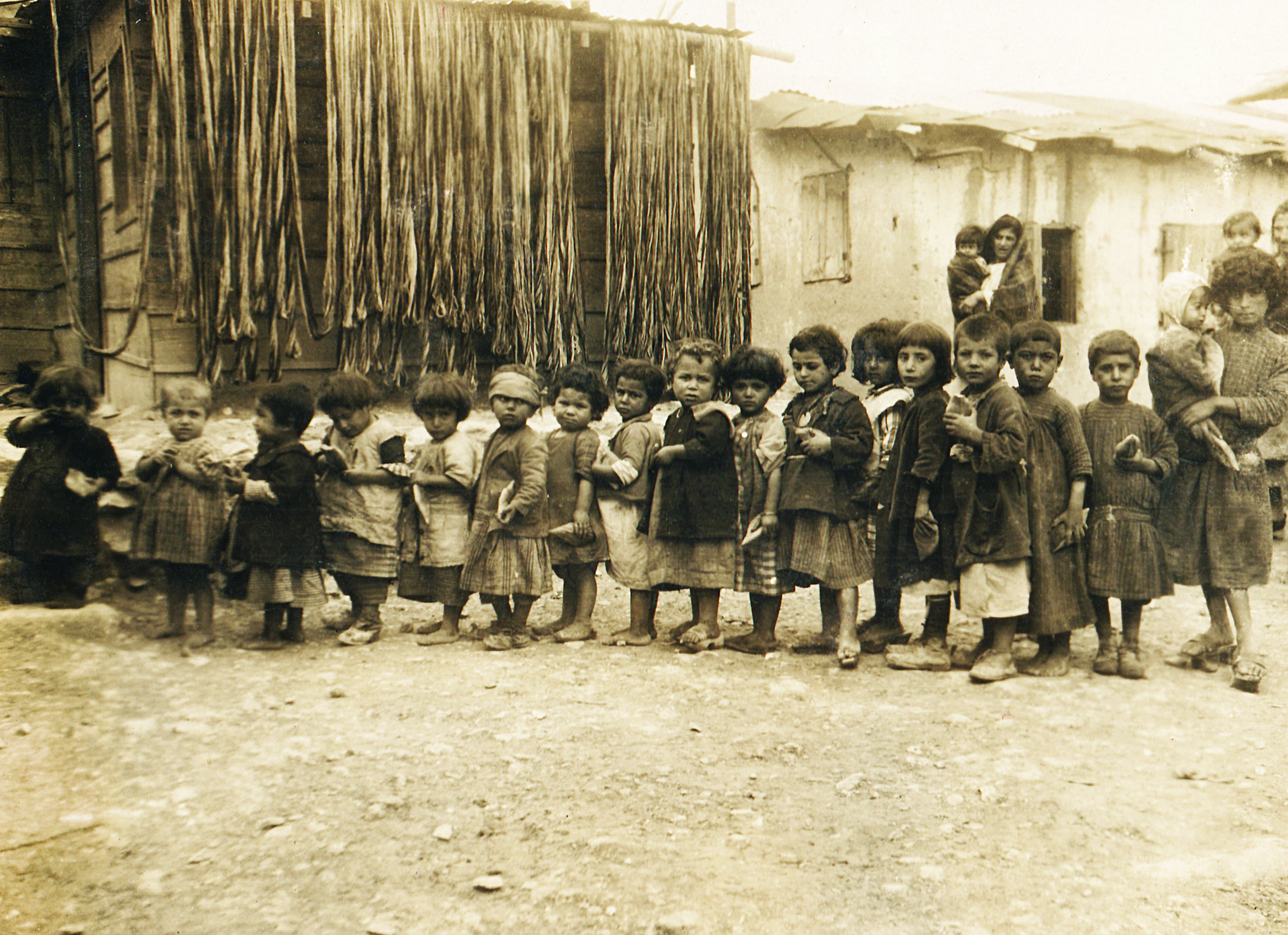
The line of Armenian orphans with per diem bread in their hands.
“In order to slightly improve the dire situation in the big camp of Ram, we decided to provide 400 children and girls of the same camp with hot meals at midday.”
Karen Jeppe’s letter
to Aleppo leader Artavazd Surmeyan
January 13, 1926
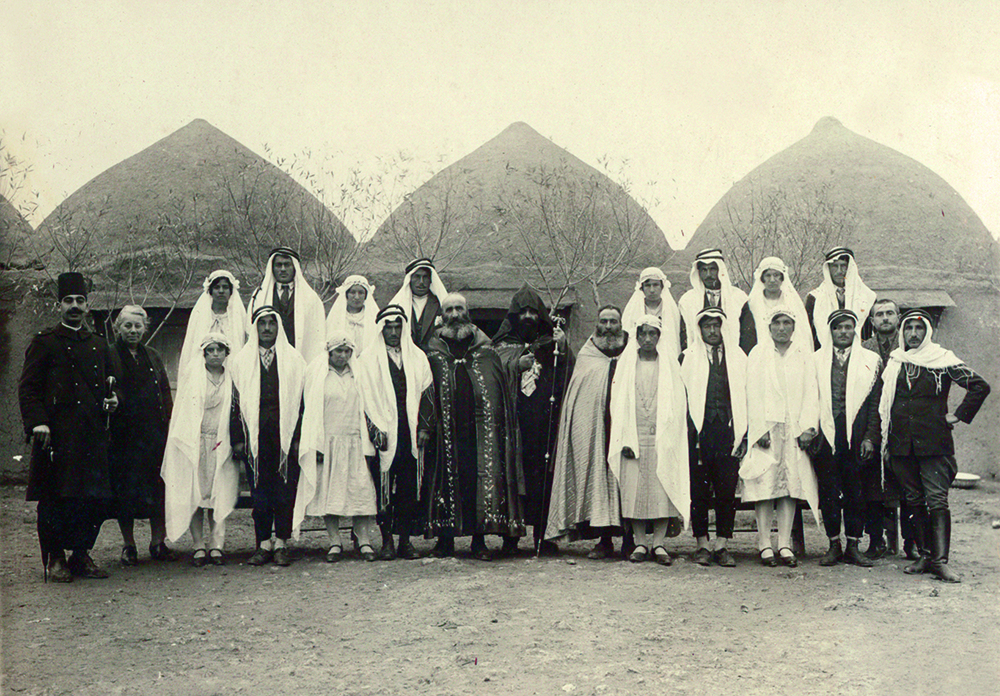
The photo presents a scene from the collective wedding ceremony organized by Danish Armenophil Karen Jeppe in the Mesopotamian new built Tina village (Syria), where eight couple were married at the same time. This unique wedding ceremony was performed by Mkrtich Muradyan and two other priests. The second person from the left is Yeni Yenson; assistant of Karen Jeppe.
“Wedding in desert…
On day eight orphan couples get married. Our graceful young girls taken from the desert have put white shreds on their heads and became brides, and our youngsters became grooms by Arabian kerchiefs (pushi and agal)…
The more majestic Armenian wedding”.
Simon Simonian
“Wedding in the Desert”, “Hayreniq” newspaper, Boston, 1958, June 28-29
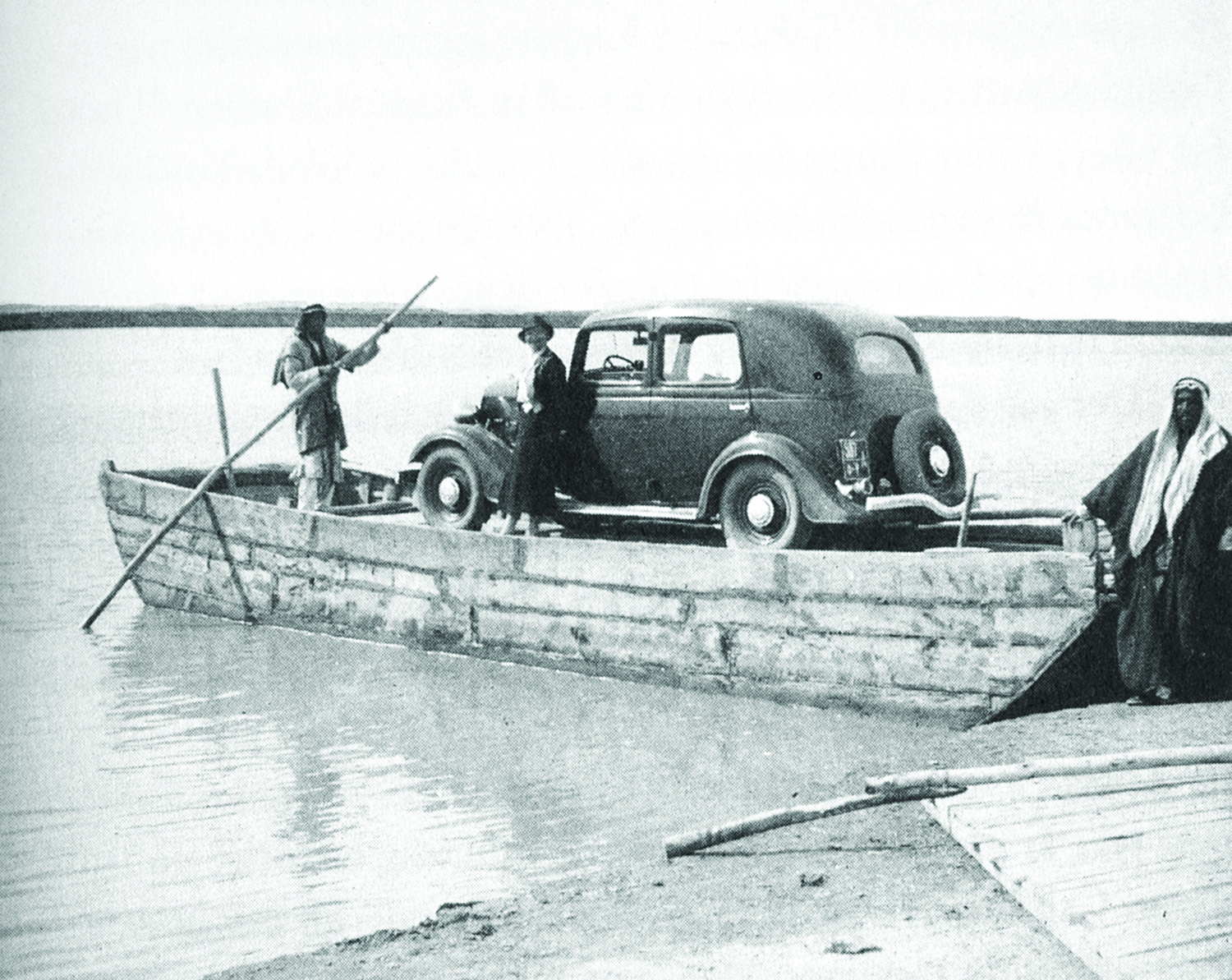
Danish Armenophil Karen Jeppe, appointed as a commissioner by the League of Nations, was depicted in the photograph while crossing the Euphrates by raft. Karen Jeppe passed thousands of kilometres through the Mesopotamian deserts to free the Armenian women and children from captivity. Jeppe’s Ford car; “Anna”, which was damaged in an accident, played an irreplaceable role during that mission. The car depicted in this photo is another one used by Karen Jeppe later on to complete her mission.
“She got a plan from the League of Nations; they offered to her a hard job; she has to find the Armenian orphans who were found in Arabic families during the deportations. The job was hard- She was physically weak and said: “I can’t do this”. I told her: “Mother, you accept it and I will do it to save the children of my nation, no matter what difficulties should I face”.
Misak Melkonian
Adoptee son of Karen Jeppe
Unpublished memories of orphan collecting works
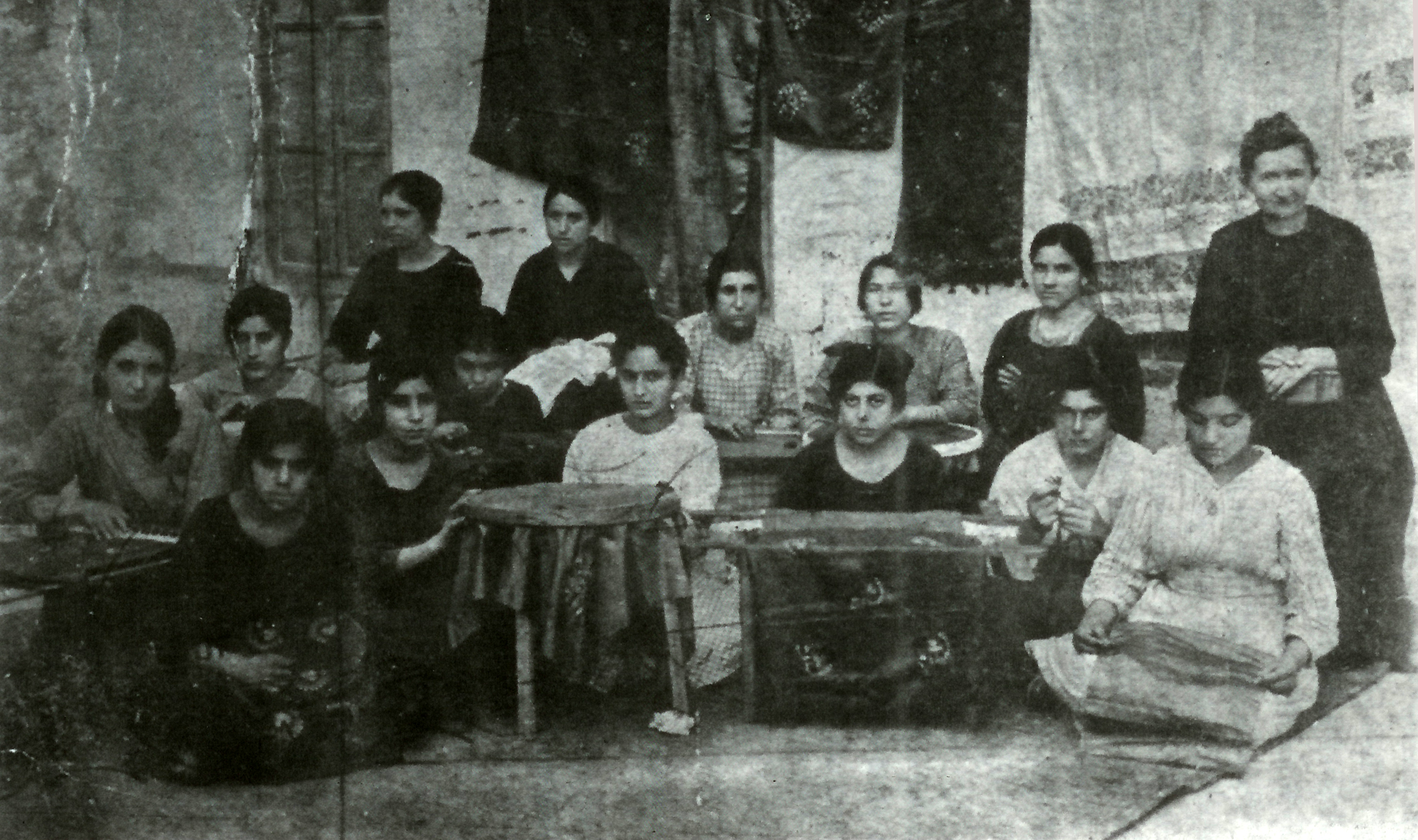
Karen Jeppe with her students.
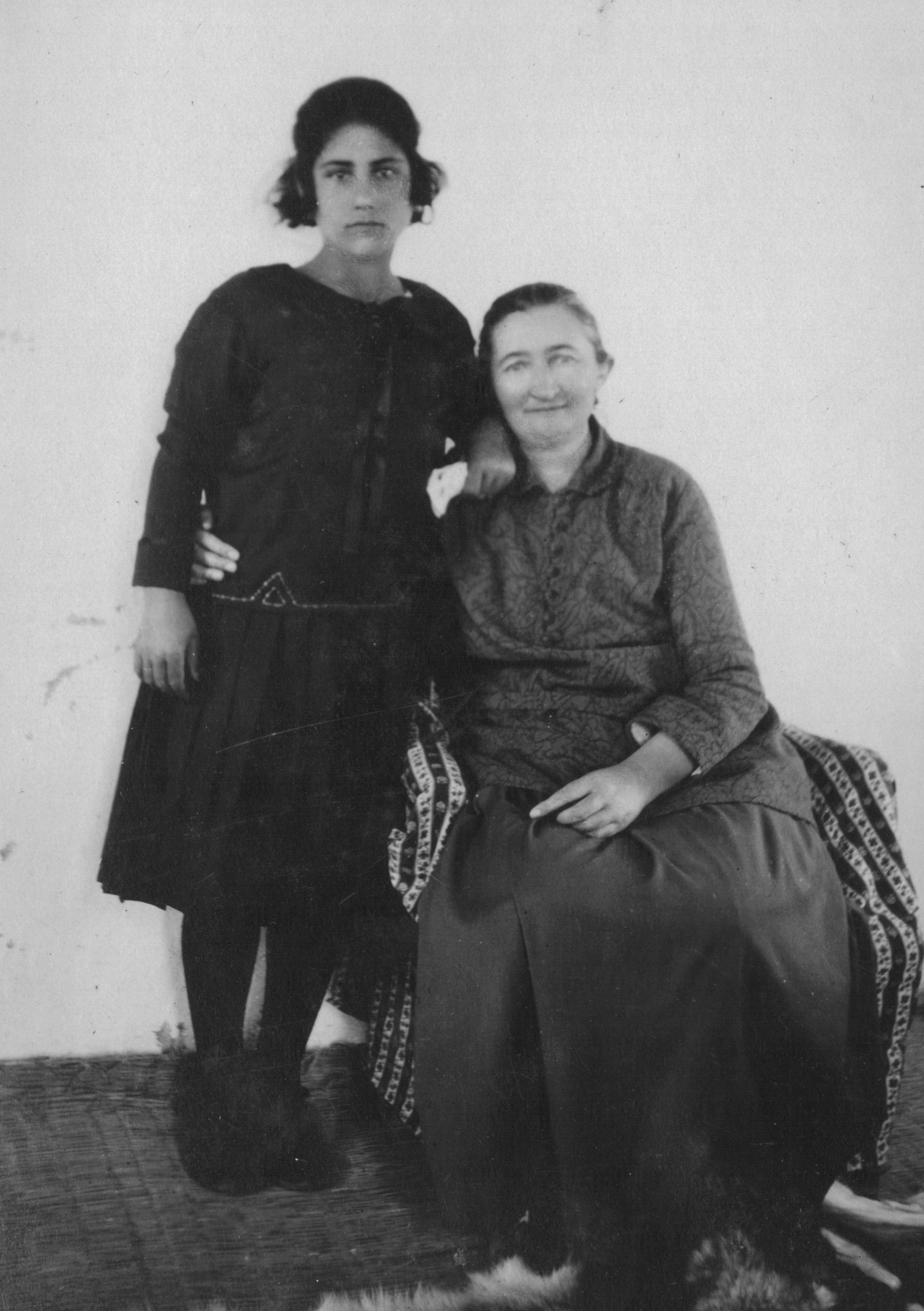
Karen Jeppe with one of her students, 1920’s.
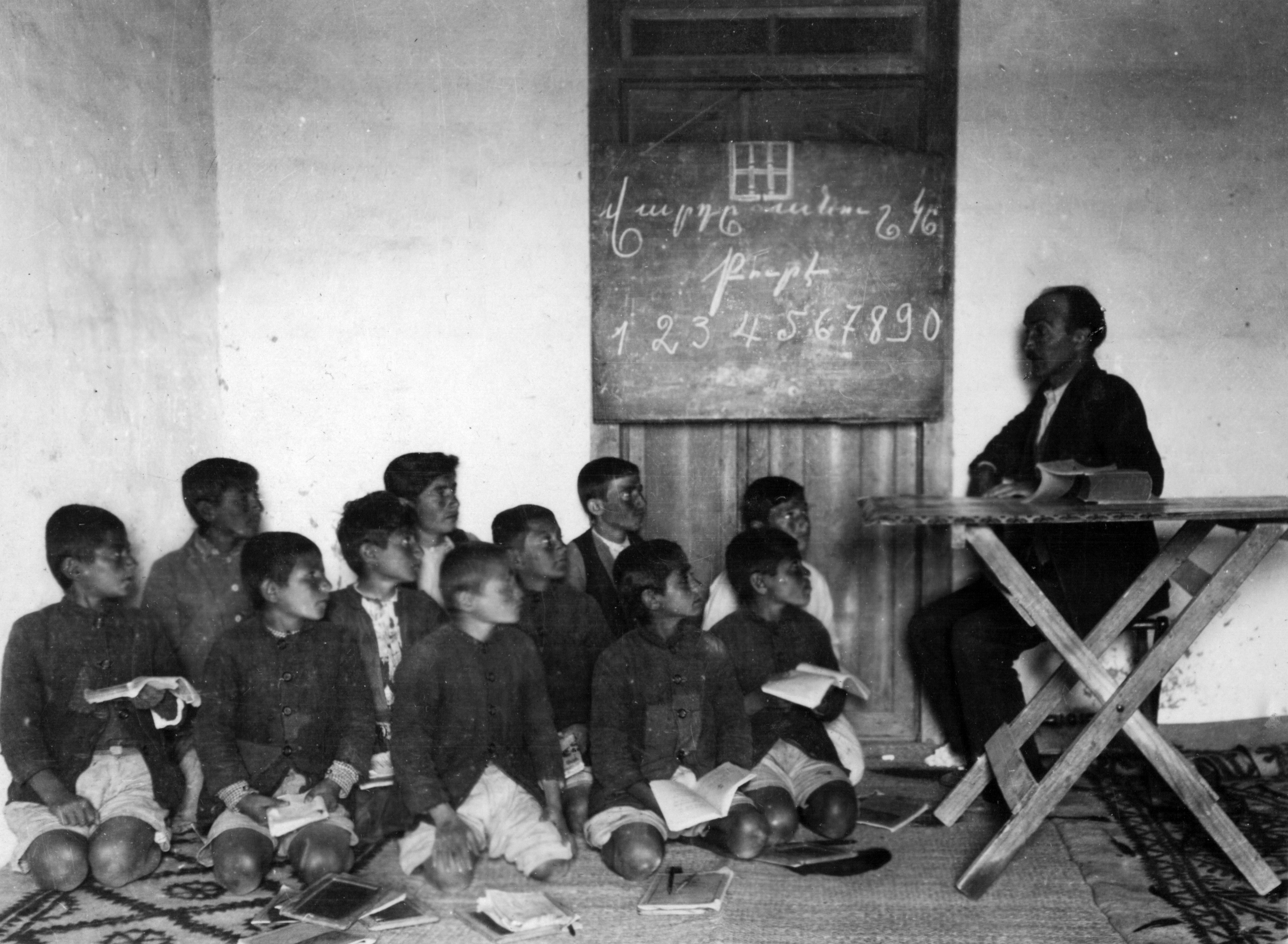
A photo from Karen Jeppe’s album, 1920’s.
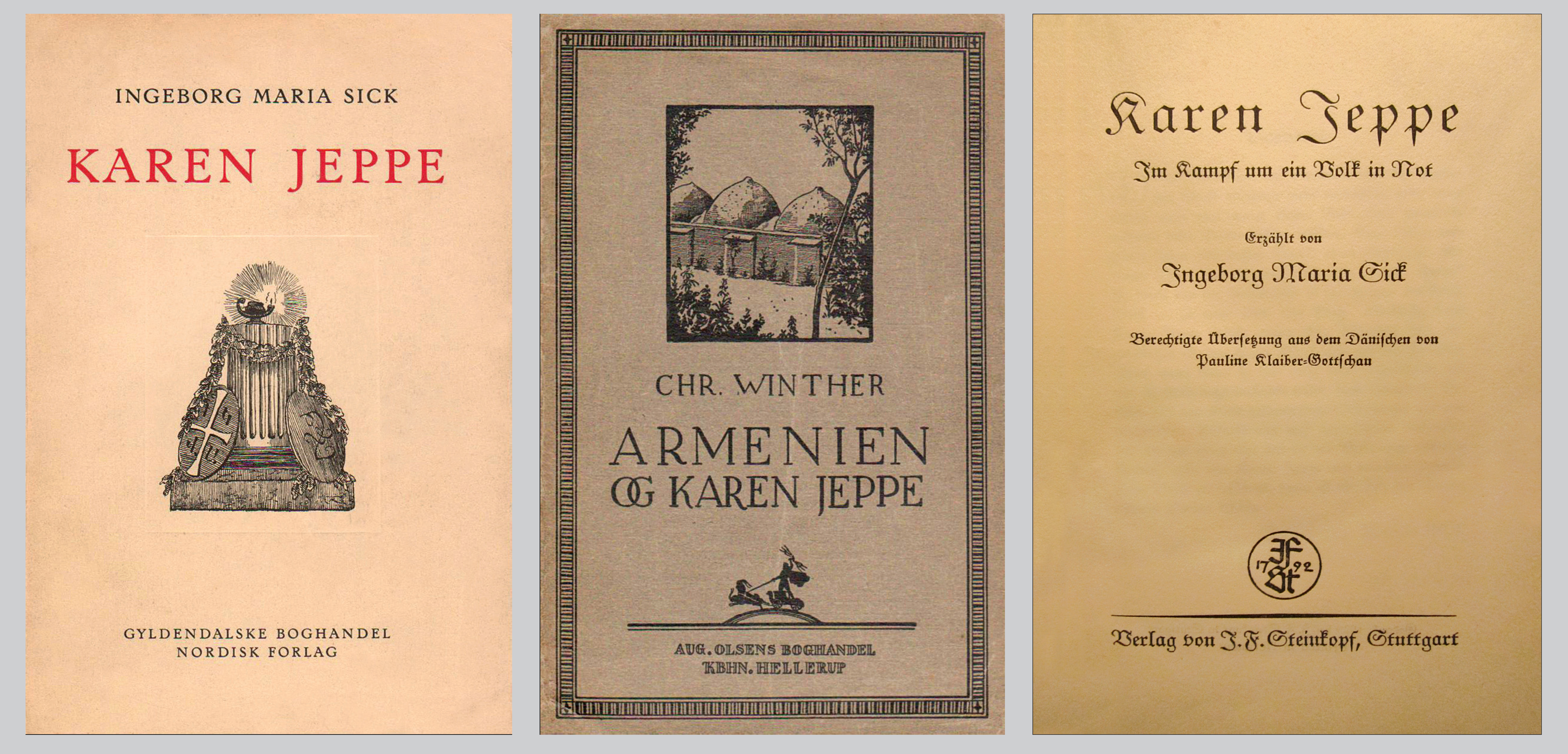
Three biographical books about Karen Jeppe and her book written in German on the fate of the Muslim orphans released from captivity.
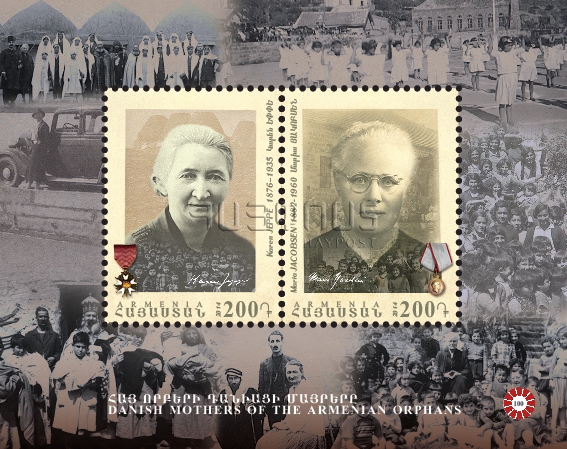
Stamp issued in the framework of the events dedicated to the 100th anniversary of the Armenian Genocide, 2014.





